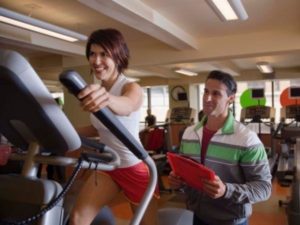
Diagnosed with Cancer? Your two greatest challenges are understanding cancer and understanding possible side effects from chemo and radiation. Knowledge is Power!
Learn about conventional, complementary, and integrative therapies.
Dealing with treatment side effects? Learn about evidence-based therapies to alleviate your symptoms.
Click the orange button to the right to learn more.
- You are here:
- Home »
- Blog »
- side effects ID and prevention »
- Exercise w/ Atrial Fibrillation-Good or Bad?
Exercise w/ Atrial Fibrillation-Good or Bad?
The burden of arrhythmia can be reduced by physical exercise. The effect of exercise intensity on burden of atrial fibrillation (a-fib) needs to be studied further
You’ve developed atrial fibrillation aka A-fib. Just sitting or lying around makes you feel a bit scared because you can feel your heart jumping around in your chest. If you exert yourself you know that your heart rate will jump around even more. But at the same time, you know that a sedantary lifestyle is bad for your heart! What do you do?
Two things. First, according to the study below, “the burden of A-fib can be reduced by physical exercise.” Simply put, when you exercise, you feel better. For the record, I have had chronic A-fib since 10/10. When I exercise, I feel better. Spoiler alert- according to the study below, it’s not about intensity, it’s about frequency. Just do it!
The key, in my opinion and according to the study below, is to exercise frequently but moderately. In my case, moderately is not much more than fast walking…So, practically speaking, this means that the first thing I do every morning is to head to my local Life Time Fitness (think Walmart style place to work-out). Inexpensive, clean, lots of equipment, no waiting. Lots of familiar faces. None of us like to work out first thing in the A.M. but we are all there because we feel better after our daily W.O.
To put this in terms of the study below, both high-intensity and low-intensity exercise improve “peak VO2.” Both HI and LI exercise “reduce the burden of arrythmia.” Any exercise is good for you. So don’t put too much pressure on yourself. Just get to the gym regularly. The more frequently you exercise, the more of a habit exercise becomes. The more you exercise, the better you will feel.
To learn more about evidence-based, non-toxic nutrition and supplementation to support heart health, scroll down the page, post a question or comment and I will reply to you ASAP.
Thank you,
David Emerson
- Cancer Survivor
- Cancer Coach
- Director PeopleBeatingCancer
Recommended Reading:
- Catheter Ablation no better than Drugs for AFib
- Evidence to Manage My Heart Disease is “Weak”
- Living With Chronic Atrial Fibrillation with Non-Conventional Therapy
Cardiovascular exercise and burden of arrhythmia in patients with atrial fibrillation – A randomized controlled trial
“Physical activity at moderate-high intensity is recommended to prevent lifestyle diseases. Patients with atrial fibrillation are at risk of a sedentary lifestyle due to fear of exercise-induced episodes of atrial fibrillation. The burden of arrhythmia can be reduced by physical exercise. The effect of exercise intensity on burden of atrial fibrillation needs to be studied further…
In a 12-week randomized controlled trial, 76 patients with paroxysmal/persistent atrial fibrillation were allocated to perform exercise at either low intensity or high intensity (50% and 80% of maximal perceived exertion, respectively).
Primary outcome was burden of AF measured by daily electrocardiography-reporting during 12 weeks. Secondarily, change in maximal oxygen uptake (peak VO2) and 1-year hospitalization was compared between low and high intensity exercise.
Sixty-three patients completed the follow-up. In the intention-to-treat analysis, we found no statistical difference in burden of atrial fibrillation between low and high intensity exercise.
No serious adverse events were reported and there was no difference in hospitalization between the two exercise groups. Both exercise groups improved significantly in peak VO2, with no statistical difference between-groups.
Conclusions- High intensity physical exercise was not superior to low intensity physical exercise in reducing burden of atrial fibrillation. HI exercise was well tolerated; no evidence of an increased risk was found for HI compared to LI exercise. Larger studies are required to further prove our findings.”


